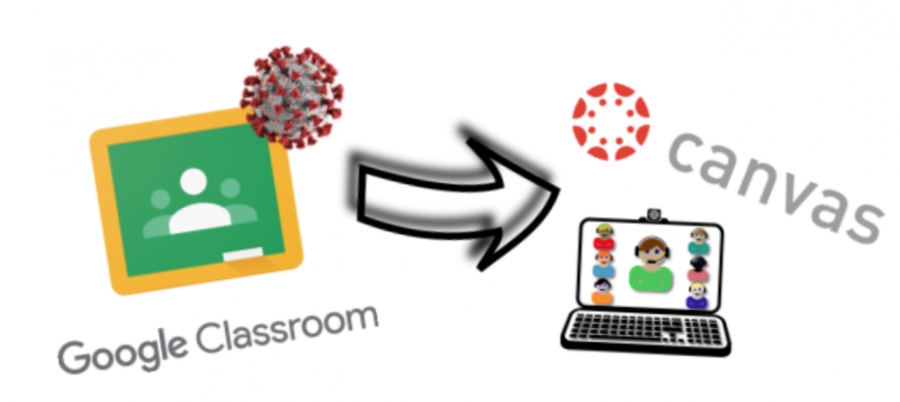WCHS teachers switch from Google Classroom to myMCPS
Before the pandemic, teachers used Google Classroom as the main platform for online teaching and resources. Now educators use Canvas which students and teachers are beginning to get used to.
October 28, 2020
Last year during the fourth quarter, teachers were frantically trying to instruct classes using Zoom and Google Classroom. Eventually, it was decided that the first semester of the next school year would be completely online, only this time without the online resources WCHS staff were familiar with.
Canvas, or as we all know it, myMCPS Classroom has become the main platform for online teacher instruction. For years Google Classroom was the site that teachers used to give assignments, make announcements and so on. The switch to a virtual classroom has resulted in changes teachers and students did not expect.
“We found out midsummer that we were going to one platform, and that would be Canvas,” Shelley Perrett, an AP Language and Composition teacher, said. “ I was really stressed out about it because so much was going to be new and different. It was another thing, and I [and her students] knew nothing about it.”
Canvas has many features like moderated grading, website tracking during quizzes, a collaborative workspace and the ability to upload photos and videos plus more. Overall, it allows teachers to monitor their students closely to prevent cheating and academic dishonesty, which is crucial to virtual learning since students are surrounded by dozens of devices a day, and not in a classroom.
“The ability to do mass emails quickly and easily to students and parents is pretty great,” John Freundel, an AP Psychology teacher, said.
Of course, there are a variety of positive features that are helpful to teachers, but new things always come in sets of positives and negatives. Canvas is something that all teachers have to navigate through on their own and frustrating complications that come as a result of getting used to the site are bound to come into play.
“There are a lot of boxes to check to set assignments up properly. If you miss one box, everything is thrown off, “ Perrett said. “ I am used to Google Classroom; I know it. Canvas is not as user friendly — you have to click so many buttons! Maybe one day, I will like Canvas.”
According to Edsurge, as of 2016 over 18 million students and teachers in over 1,600 learning institutions are using Canvas. Canvas had already existed for a long time, so why did schools wait for COVID-19 to start using it? To put it simply: it was already on the agenda.
“We have known for a few years that the county was expecting teachers to change over to Canvas, the Covid closures just sped up the timeline of the switch,” Freundel said. “I would say we were told to definitively use Canvas in the spring last year.”
Regardless of what decisions were made a few months ago, Canvas is an educational tool both teachers and students have to get used to. It may not be the most helpful thing to learn how to navigate a whole new platform during a pandemic, but teachers are already overcoming the obstacles of not being in physical school.
“I will do what I need to for my kids. There are so many things that Canvas does, but it is super time consuming. I will just stick with the basics — post assignments in the Modules, grade, and sync,” Perrett said. “I do not think using all of the bells and whistles will make me a better teacher.”
The second quarter of the school year is coming close in sight. Online school for everyone is becoming normalized, and soon enough Canvas will just be another part of our lives.
“Honestly Google classroom is slightly quicker to put in assignments, but the speedgrader feature in Canvas is pretty great. That is a long way of saying they both have their pros and cons and I do not really have one that stands out too much above the other,” Freundel said. “At this point in the semester, I’m fine with the program and the fact that we have switched.”


